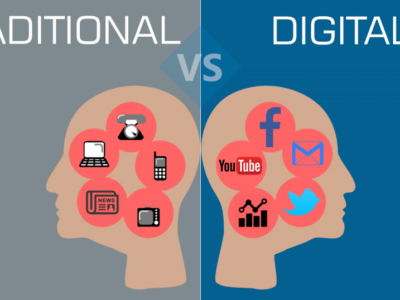– Team DentalReach
Abstract
The idea of combining the efforts of dentists of narrow specializations to solve complex patient problems is not new. It is embodied in different forms that have their own functional characteristics and boundaries. Both these are discussed here in detail, explaining how to respectfully handle dental consultants of an in-house dental dream team, in a way that they also benefit the private practice. Other types of dental consultations are also discussed.
Consilium and its metamorphoses
Consultation (extended consultation) is a form of cooperation of narrow specialists, which aims to develop a collegial understanding of the diagnosis, methods and plan of treatment or rehabilitation, which will then be carried out by one or more doctors.
Types of dental consultation include:
- An in-house dental team of specialists – most appropriate
- Inviting a colleague for a consultation
- Doctors' industrial conference/meetings
- Thematic training conference of doctors/study clubs
Characteristics of dental consultation in an in-house dental team
A properly organized consultation has clear characteristics:
1) Appointed as soon as possible when combined complaints of the patient are identified, in order to ensure the prompt provision of dental care.
A well-trained administrator, listening to the complaints of a patient in a clinic, may understand that he has several limitations that require the participation of different dental specialists. Usually, based on the complaints and wishes of the caller, it is clear that say, a therapist, periodontist, surgeon-implantologist, prosthetist is needed. It is quite reasonable to suggest that the patient immediately visit the consultation with the participation of the necessary specialists, explaining that it will give him the opportunity to understand his problem as a whole, get a complete recommended treatment plan, save time at the preparatory stage of treatment.
In some clinics known to us, the proposal of a consultation with the participation of trained administrators is being successfully carried out. This testifies to the competitive advantage of clinics and the availability of a well-organized medical service. One of its functions is to provide an early solution to the patient's problems.
Many doctors object to administrators offering potential patients a consultation at the stage of informing them about the clinic's services by phone. This is usually due to a lack of trust in administrators and their lack of training to perform such a function. It is customary to invite everyone who called for a consultation with a therapist who launches a traditional conveyor: "You need to go to a consultation with a periodontist, surgeon …".
The transition to new forms of customer service is an indicator of teamwork, depending on the maturity of management and front-line personnel.
2) The clinic immediately appoints the first narrow specialist to whom the patient came for the initial consultation.
This means that the specialist who gave the first consultation must continue the treatment. This also brings us closer to the standards of medical service, however, in order to implement it, doctors need to be assigned an appropriate duty and plan the time for consultations in the schedule.
3) The consultation is conducted according to a scenario in which a number of aspects are revealed, which in turn determines the patient attitude.
The attitude of patients towards doctors of the consultation and the results of treatment depends on the combination of circumstances. This is dependant on organizational, representative, informational, psychological and commercial factors of the consultation. There can be 3 patient attitudes:
Patient attitude can be positive if the counselor is doing their job well:
- explains to the patient the stages of treatment
- informs about its probable results
- coordinates the work of colleagues “here and now” – if necessary, adds information from narrow specialists
- makes transitions from the actions of one specialist to the actions of another.
The patient's attitude will be uncertain when he is unable to understand:
- what and why "they do with him"
- what will be the results of the treatment
- who is responsible for the work and the quality of treatment in general.
The patient's negative attitude towards the participants in the consultation will be formed if:
- some of the doctors makes a professional mistake (when making a diagnosis, choosing a treatment option, performing manipulations, anticipating discomfort during and after treatment)
- there is a "seizure of someone else's field of activity" – the doctor performs the functions of another narrow specialist
- the work is being redone due to the fault of one of the team members
- the patient cannot understand who is to blame for the admitted deviation from the expected results of treatment
- there is a lack of professional communication
- the patient sees formalism in the work of one of the team members, and even more so – notes collegial indifference
- there are violations of medical ethics.
Consultants – What could go wrong?
Unfortunately, it should be noted that in many clinics it is not customary to hold consultations in full understanding and scope of this type of collegial activity. There are some boundaries of consultations which must be kept at bay for a smooth functioning of dental practice. These boundaries may be certain thought processes or actions such as:
1) The owner of clinics thinks that it is unprofitable to conduct consultations.
Time should be allocated for them, but there is no certainty that patients will sign up, therefore, the office will be idle, doctors will be left without work. But there are clinics that set aside the day of the week for consultations in the schedule, and consider this practice to be justified. If team councils are not appointed, which is rare, patients with acute pain are admitted in the office, under guarantees, or invited from an existing record.
2) A consultation becomes a referral of a patient from one narrow specialist to another.
Case Example 1 – Referring to the wrong consultant. The endodontist, at his initial consultation, makes violations by identifying periodontal problems in teeth other than the one he was given to treat,instead of leaving it upto the principal dentist. He advices making an appointment with the periodontist. The periodontist advises the same patient to visit the surgeon,since there is a possibility of tooth extraction. And so the recipient of services goes from one narrow specialist to another due to the lack of a real consultation by a senior therapist, and a slight violation of the ideology of medical service, which states that the patient must receive the fastest provision of services.
Case Example 2 – Too much information in a haphazard way. The prosthodontist proposed the patient with a treatment plan, in which the participation of the therapist, periodontist and surgeon is required. The prosthodontist tells the patient about the stages of his treatment, determines the predicted result the parameters of the quality of treatment, discusses the possible risks in his section of work, the need for preventive measures after prosthetics, as well as the cost of prosthetics and guarantees. Other specialists, while consulting the patient separately, also talk about the technology of their treatment, about the predicted quality, possible risks, as well as the cost of their work and guarantees. As a result, the patient's head mixes information received from different doctors,the individual stages of treatment are not entirely clear, and some of the information received does not fit together
According to the literature, the lack of continuity between doctors and departments has become one of the reasons for patients' complaints to expert commissions operating under the auspices of the American Dental Association.
3) Narrow specialists, accepting the patient separately, do not consider it necessary to form a team to achieve effective treatment results.
Case Example 3. A patient attending an orthodontist consultation.The situation required a consultation with the participation of a hygienist (some teeth bother with the placement of a bracket system, as the patient says) and an aligner specialist(the orthodontist believed that he will be able to eliminate the defect in the dentition without braces). There was no suggestion of visiting the hygienist, although the patient asked whether it was possible to place a bracket system if the teeth were not treated. It was instead suggested to visit the aligner specialist after his two-week vacation. Thus, the absence of a consultation casted a doubt on the effectiveness of treatment and the availability of medical services in the clinic.The patient refused the services of the clinic.
Conclusion – The full team has to discuss and be on the same plate before informing the patient.
4) The idea of the ‘team council’ is being implemented in part.
A version of such a consultation: three or four narrow specialists participate in it, usually they find themselves together at the reception because they work according to the schedule in one shift and, perhaps, nothing unites them – neither the scientific school, nor mutual sympathies, nor ethical principles, nor material interests. They take turns examining the patient and express their views directly to the patient, skipping the principal dentist.
Typically, the patient is asked to wait in the lobby and then the agreed course of action is communicated to him by the principal dentist. Further, each specialist solves his problem, prepares the front of action for another narrow specialist. In the form of interaction discussed in the above version, different specialists expressed their different views directly to the patient, and this cannot be recognized as a team style of work, as the workflow was skipped.
5) Some doctors try to invite the patient to their place for a separate consultation.
Case Example 4. The periodontist at the council silently examines the patient and offers to make an appointment. Zero explanations why this should be done, what is the prognosis of treatment, how long it will last, how much it will cost, how this may affect the patient's working regime. To the patient's attempt to find out how much the treatment will cost, the periodontist replies: "If you want to know more detailed information, sign up for a separate consultation with me and I will tell you everything."
Some doctors call this technique a private consultation, and they cost more than the usual consultation of a narrow specialist.
Types of dental consultation other than an in-house dental dream team
1. Inviting a colleague for a consultation for advice
One narrow specialist invites another specialist who is currently free from work for a consultation. Purpose: to clarify the diagnosis, treatment technology or to reinforce your position, counting on the correct assessment of the situation by the patient. This form of cooperation is built on the basis of mutual trust and sympathy of colleagues – this is its strong point. However, specialists of the same profile usually consult with each other: a therapist with a therapist, a surgeon with a surgeon, etc., and if a representative of another specialization is involved, then complicity is limited to clarifying any information.
Case Example 5. A patient in consultation with an endodontist asks "You advise to contact a periodontist, but what can he tell me and how much will his work cost?" The dentist invites a colleague into the office who gives explanations by taking a quick look at the oral cavity. The general plan of the recommended treatment is not drawn up and joint actions are not indicated.
Inviting a colleague for a consultation has certain disadvantages:
- the necessary specialist breaks away from the process of treating his patient, which, in principle, is not permissible, but takes place in clinics where this is considered the norm;
- the patient, left for some time in the office, understands that his interests are infringed upon;
- the patient for whom the doctor was invited has mixed feelings: on one hand, he understands that he is being cared for, and on the other hand, he sees that attention is being paid to him “on the go” – the doctor appeared for a few minutes, expressed his opinion, so is it sufficiently substantiated?
2. Doctors' industrial conferences/meetings
In some clinics, doctors meet two to three times a week between shifts to discuss difficult and atypical cases, and exchange experiences/opinions.
The work of doctors is joint, but it does not pursue the goal of collective responsibility for the treatment carried out by one of the doctors. In addition, a doctor's conference is not a sale, therefore, the efforts of its participants are not rewarded. However, a doctor who, during a consultation or in the course of treatment, realized that it is necessary to consult with colleagues, can present his decision to the patient in a favorable light. It is appropriate to invite him to take a break to make a collegial decision and explain “In our clinic, it is customary at conferences of doctors to discuss clinical situations that require special attention, clarification of treatment tactics. I believe that your case should be discussed with colleagues in order to ensure the best treatment outcome. ”
This approach to the situation can emphasize the dentist's responsibility to their responsibilities and concern for the patient's well-being.
It should be noted that in an experienced team, conferences during the break between the first and second shifts are unproductive. Especially if the doctor formally tells his colleagues on the X-ray how he treated or carried out a stage of work today. Colleagues do not know the patient's psychotype, what was his attitude towards the volume of treatment. Such conferences are relevant in a new, young team that is formed into a team, then you need to move to a more detailed and in-depth format of conferences.
3. Thematic training conference of doctors/study clubs
Such a conference is held between shifts once a week and considers two or three specific cases from the patient's entrance to the clinic to the exit. The conference is led by a curator in the presence of colleagues who treated the patient. He thoroughly covers the technology of the treatment carried out, the issues of communication with the patient, aspects of sales, quality control at the stages of treatment, justification of individual guarantees and terms of service, shows which preventive program was offered to a particular patient and how it was implemented. Thus, the conference has clear educational goals.
Summary of Part 4: Handling dental consultants in a private practice
1. Combining the efforts of dentists of narrow specializations to solve complex patient problems in an extended consultation can be done in the following ways:
- An in-house dental team of specialists – most appropriate
- Inviting a colleague for a consultation
- Doctors' industrial conference/meetings
- Thematic training conference of doctors/study clubs
2. A properly organized consultation has clear characteristics:
- Consultants are appointed as soon as possible when combined complaints of the patient are identified
- The specialist who gave the first consultation must continue the treatment.
- The consultation is conducted in a proper scenario which in turn determines the patient attitude.
3. Consultations can go wrong if:
- The owner of clinics thinks that it is unprofitable to conduct consultations.
- A consultation becomes a referral of a patient from one narrow specialist to another (referring to a wrong consultant/too much information by too many consultants)
- Narrow specialists, accepting the patient separately, do not consider it necessary to form a team to achieve effective treatment results.
- The idea of the ‘team council’ is being implemented in part.
- Some doctors try to invite the patient to their place for a separate consultation.




















Comments